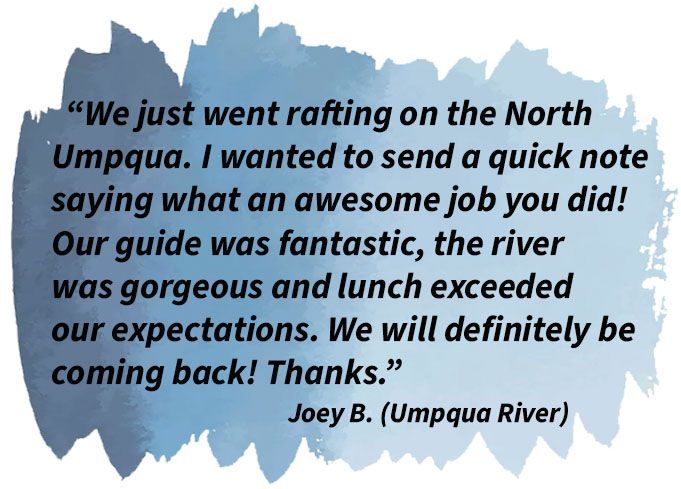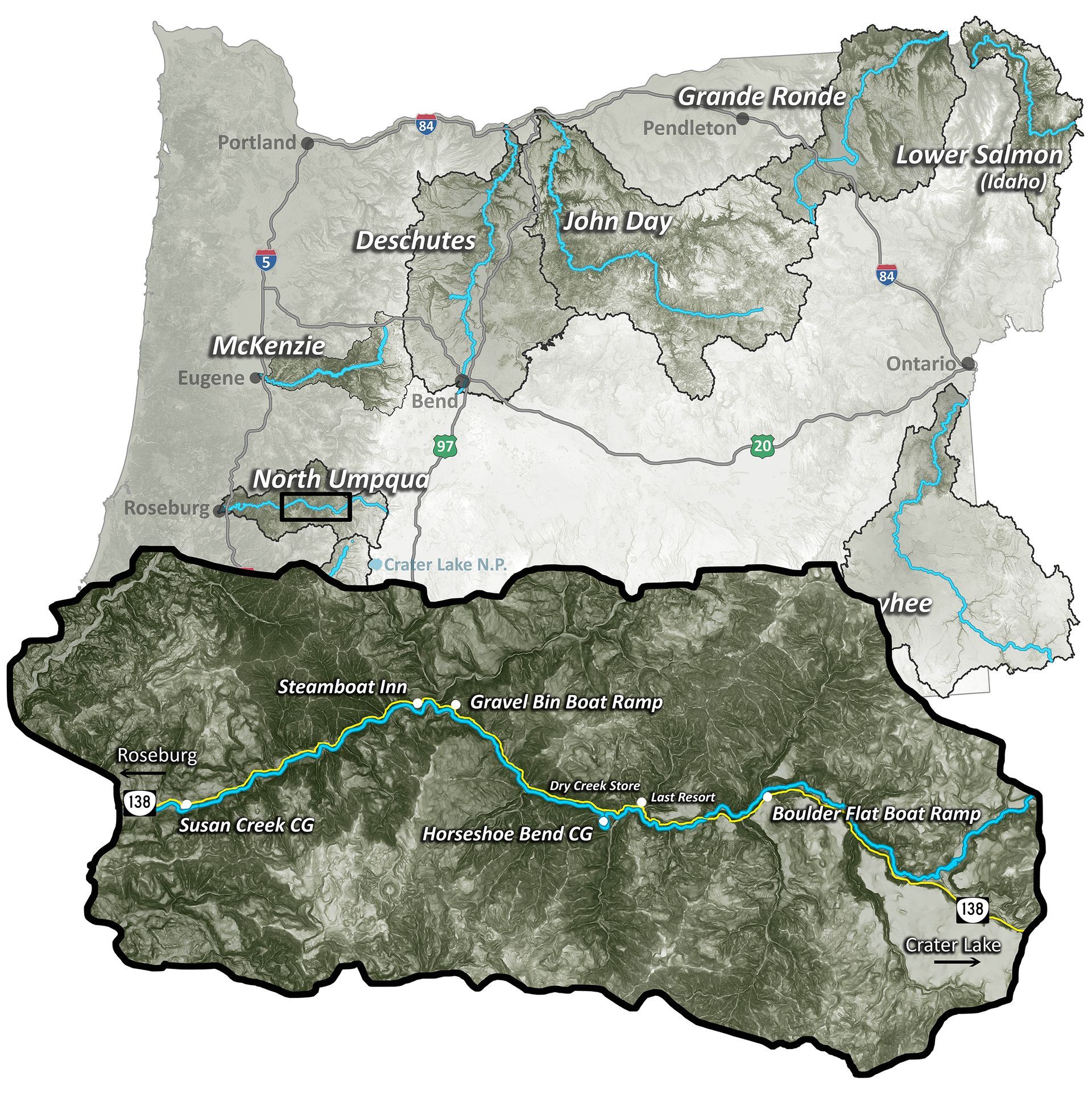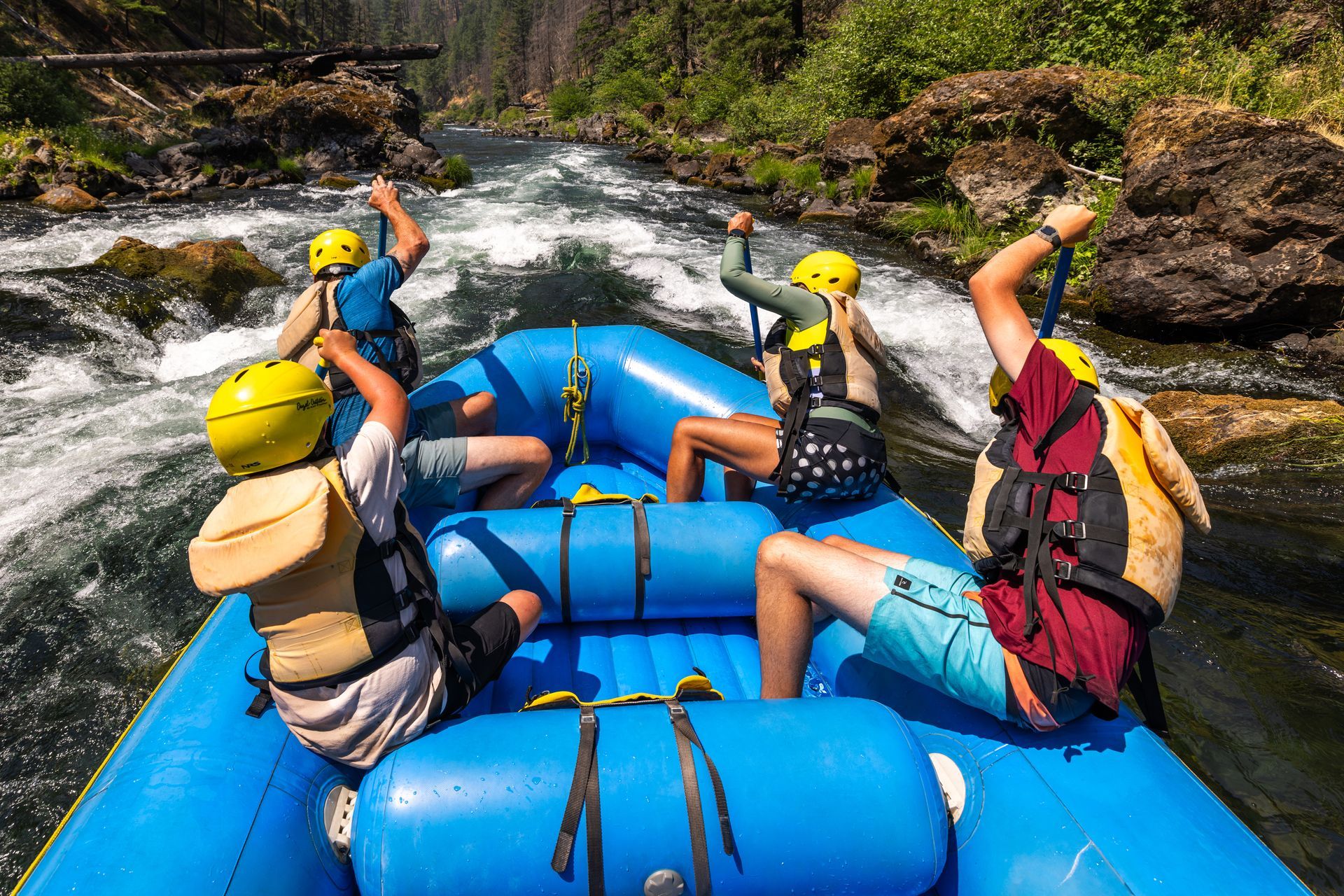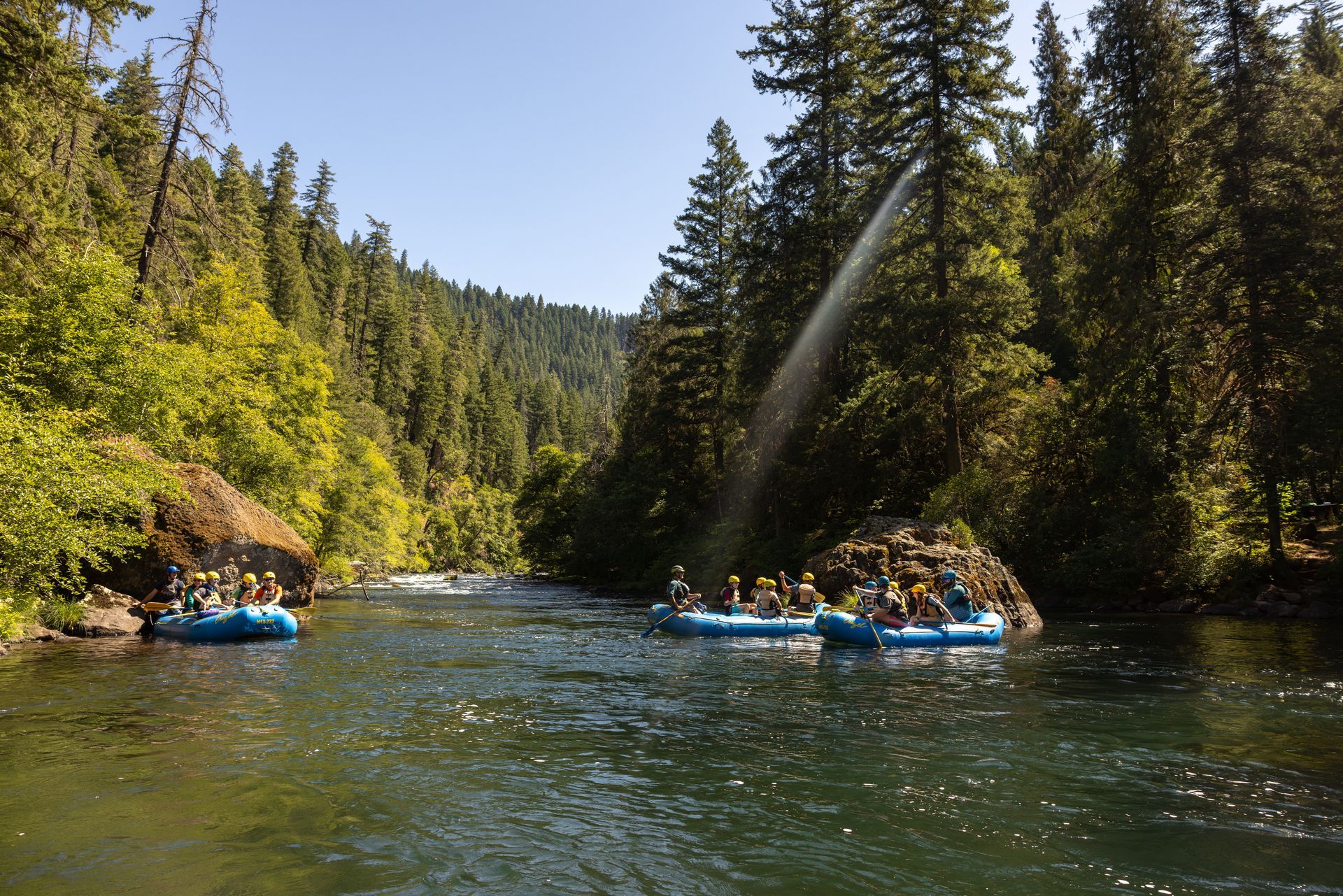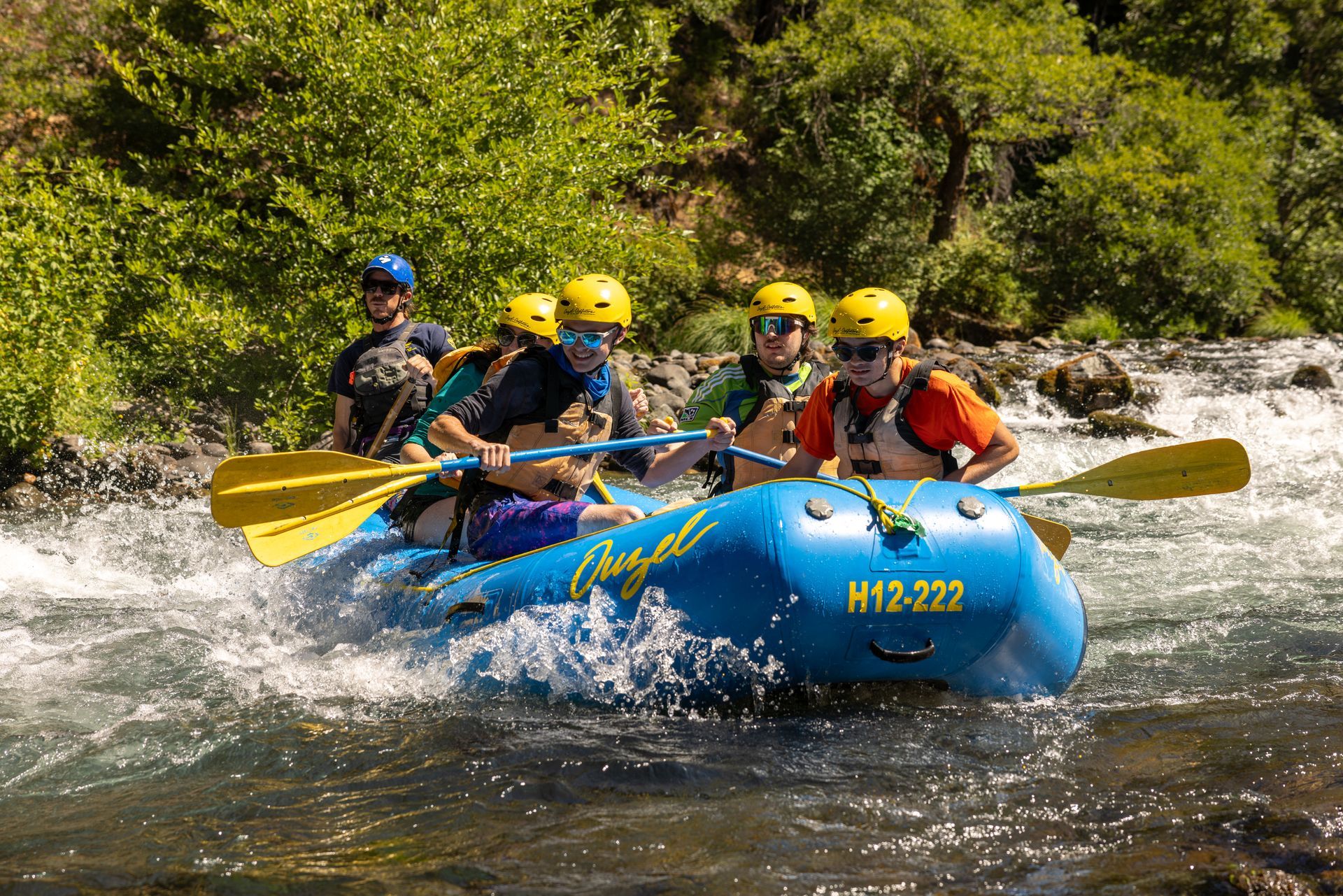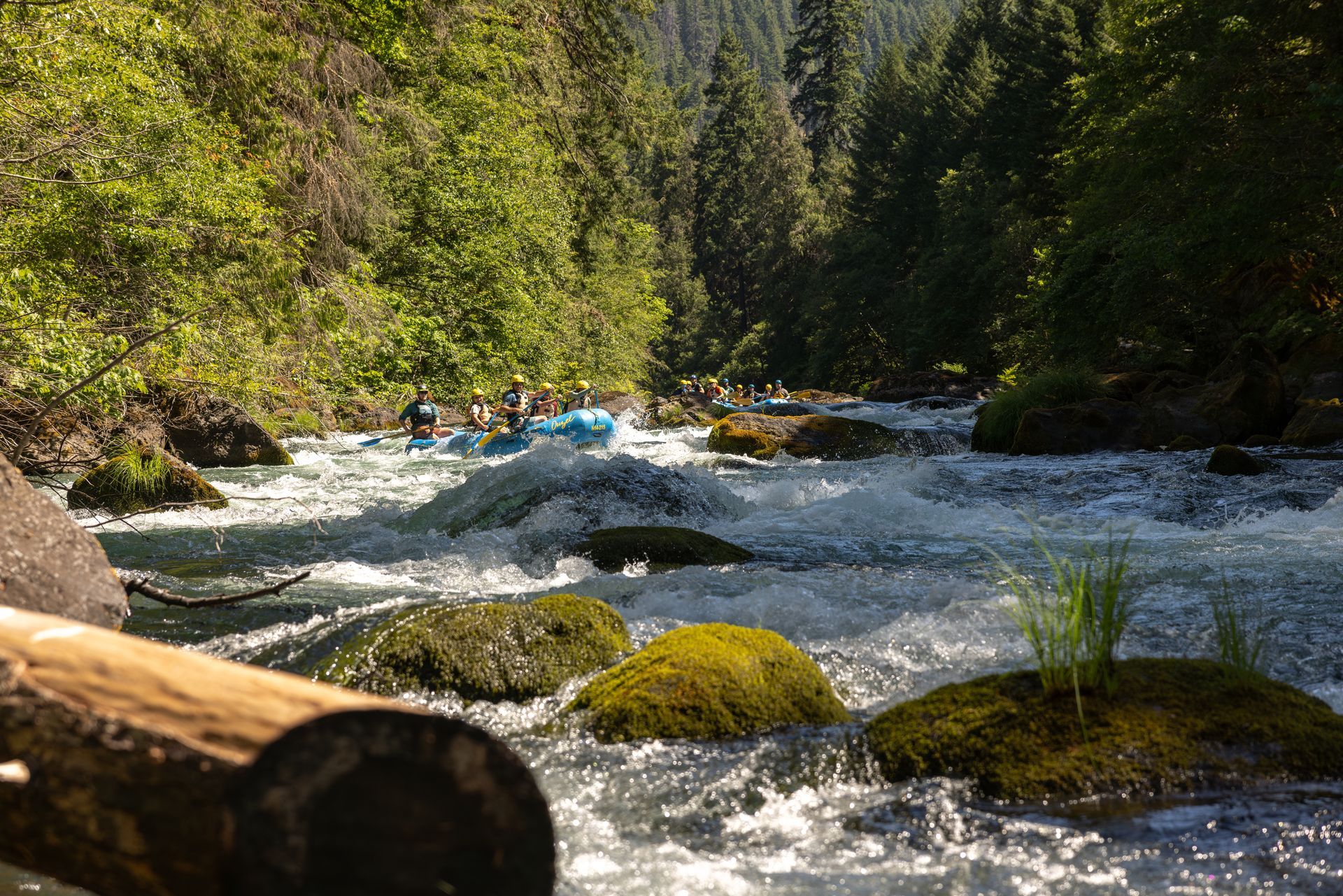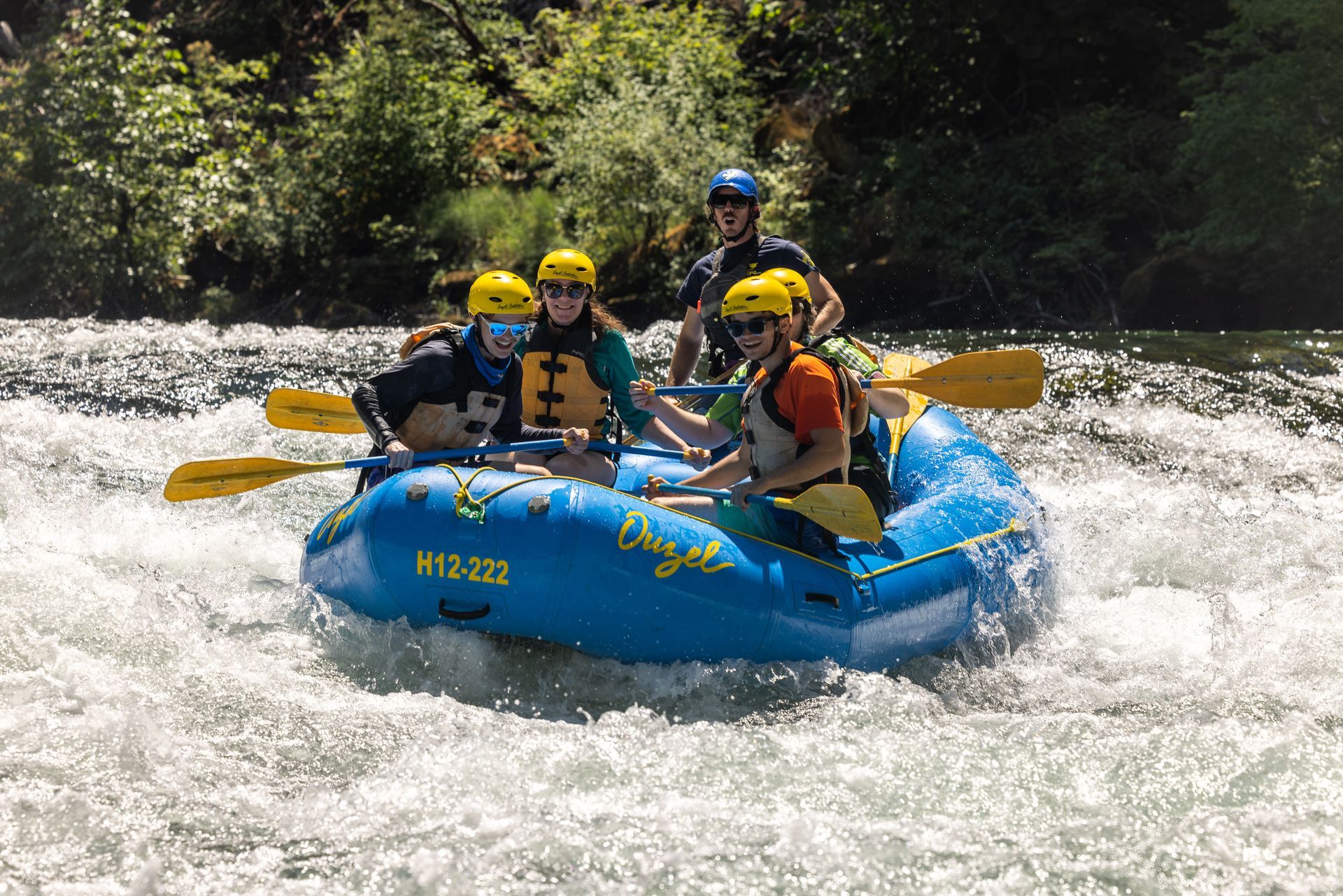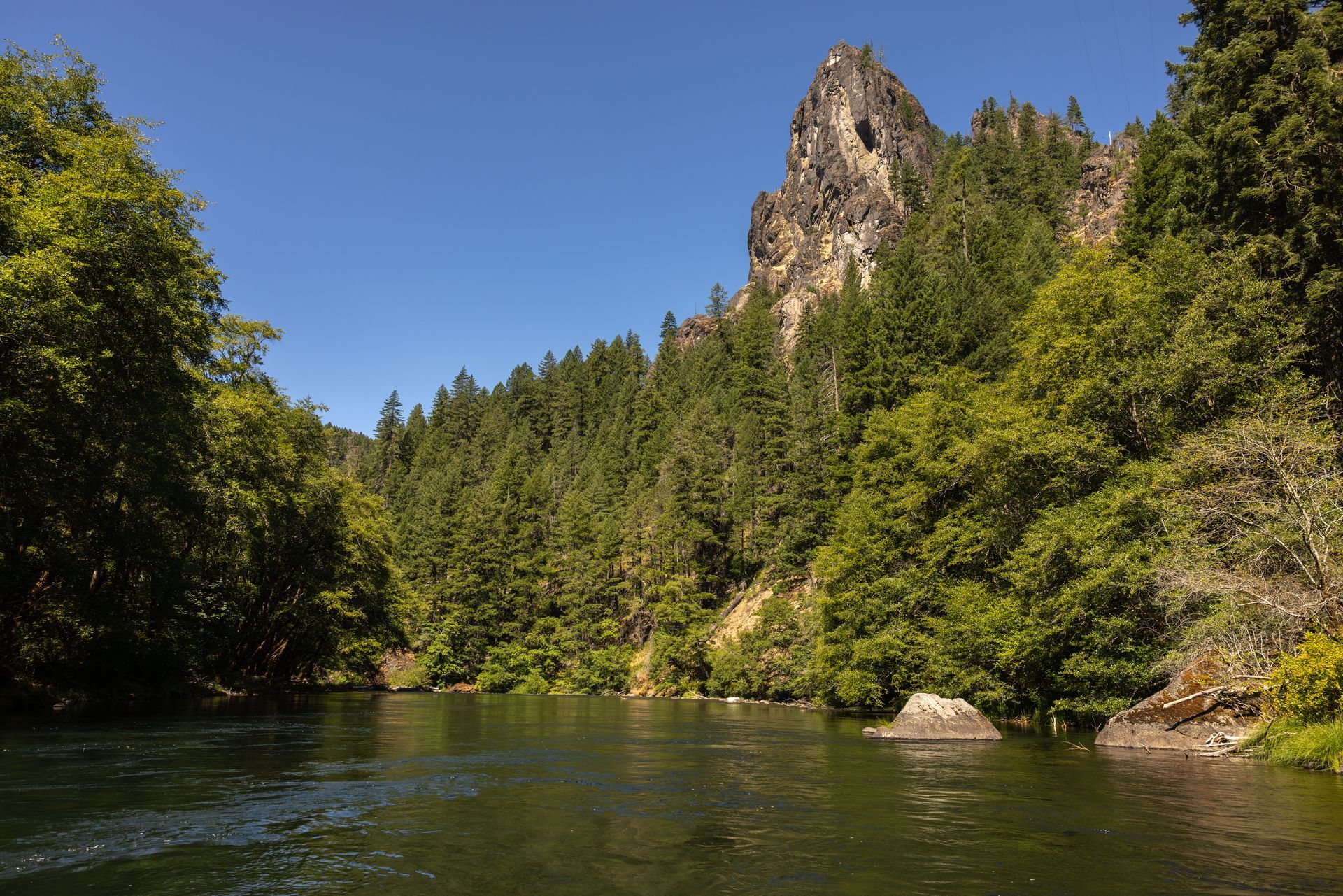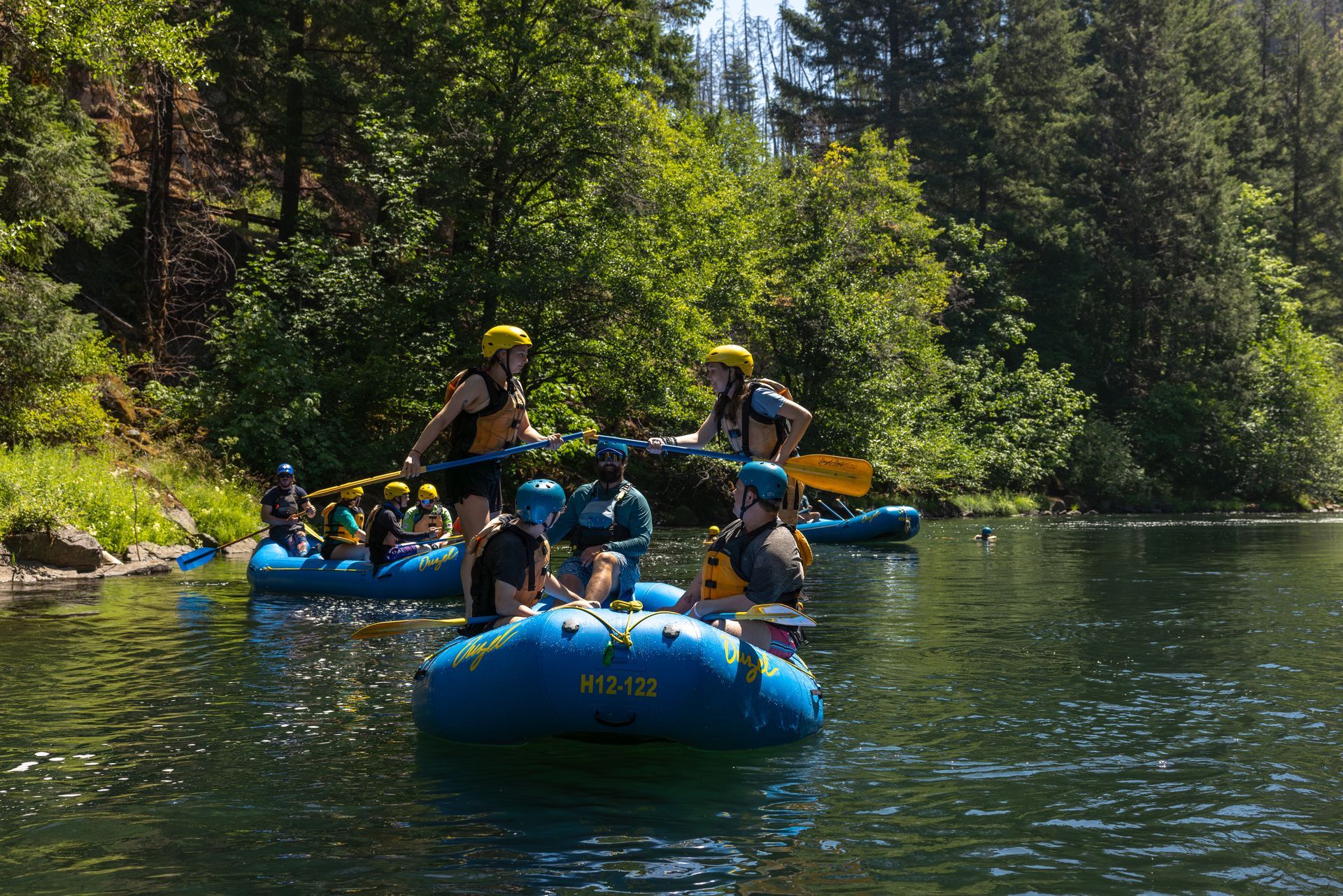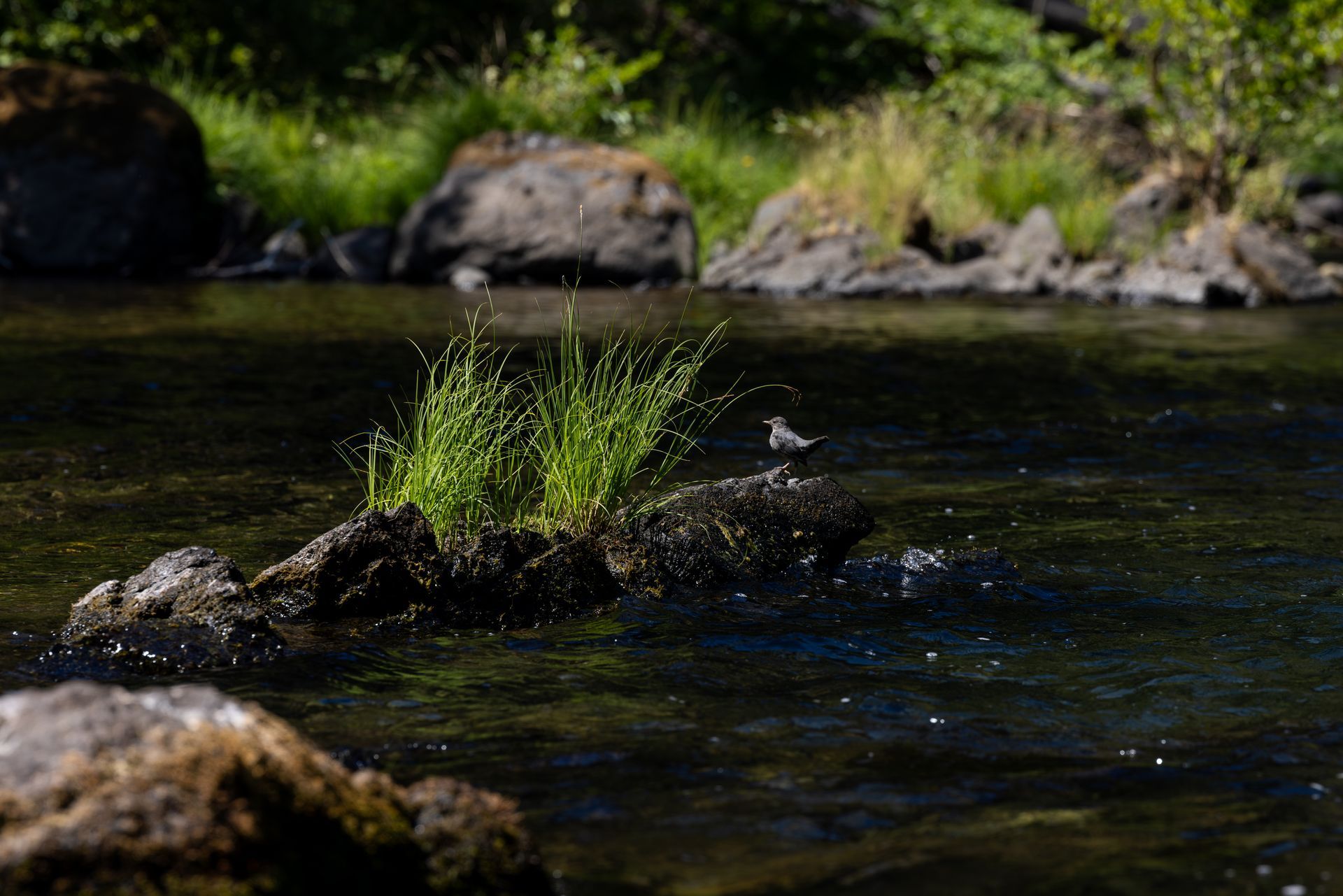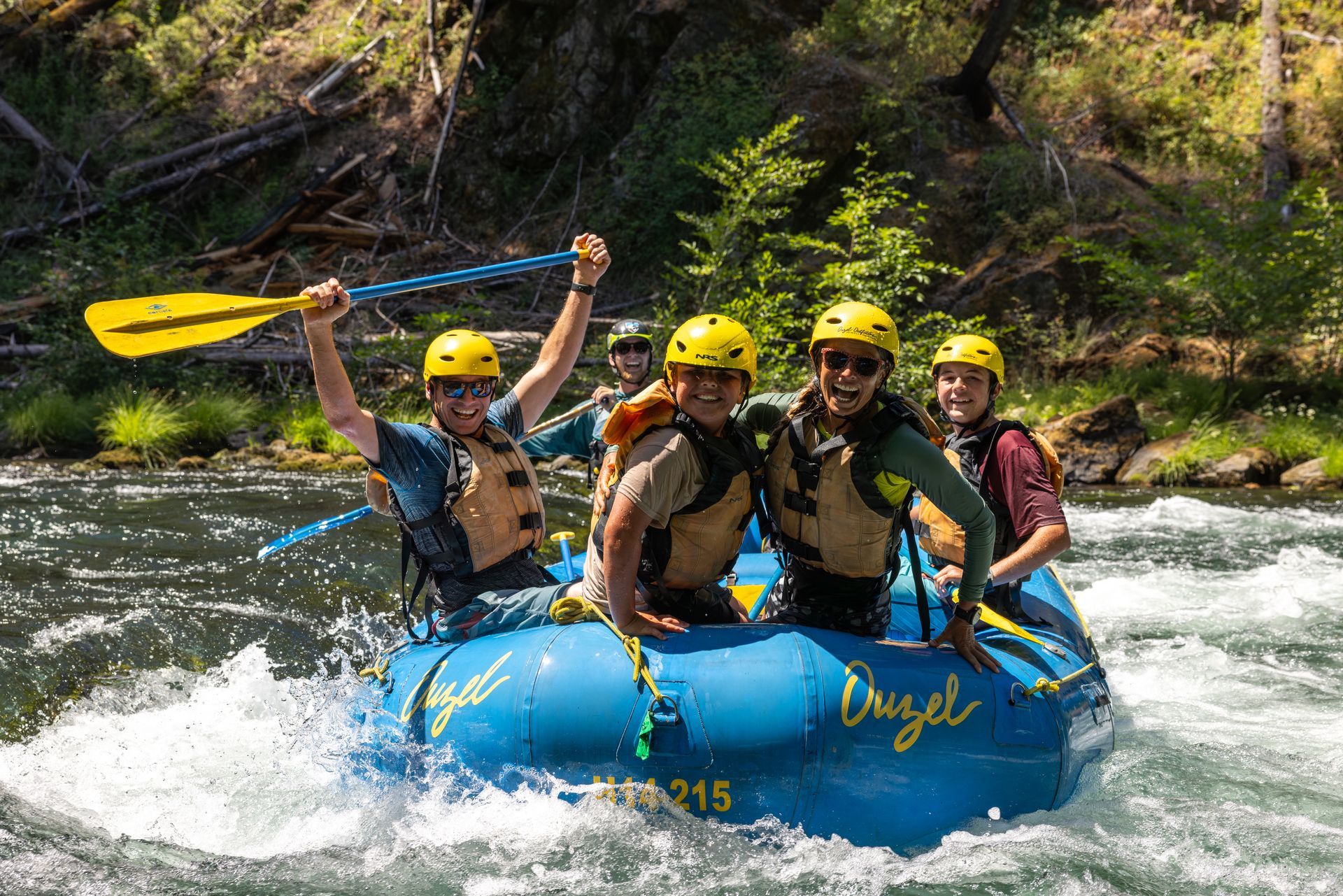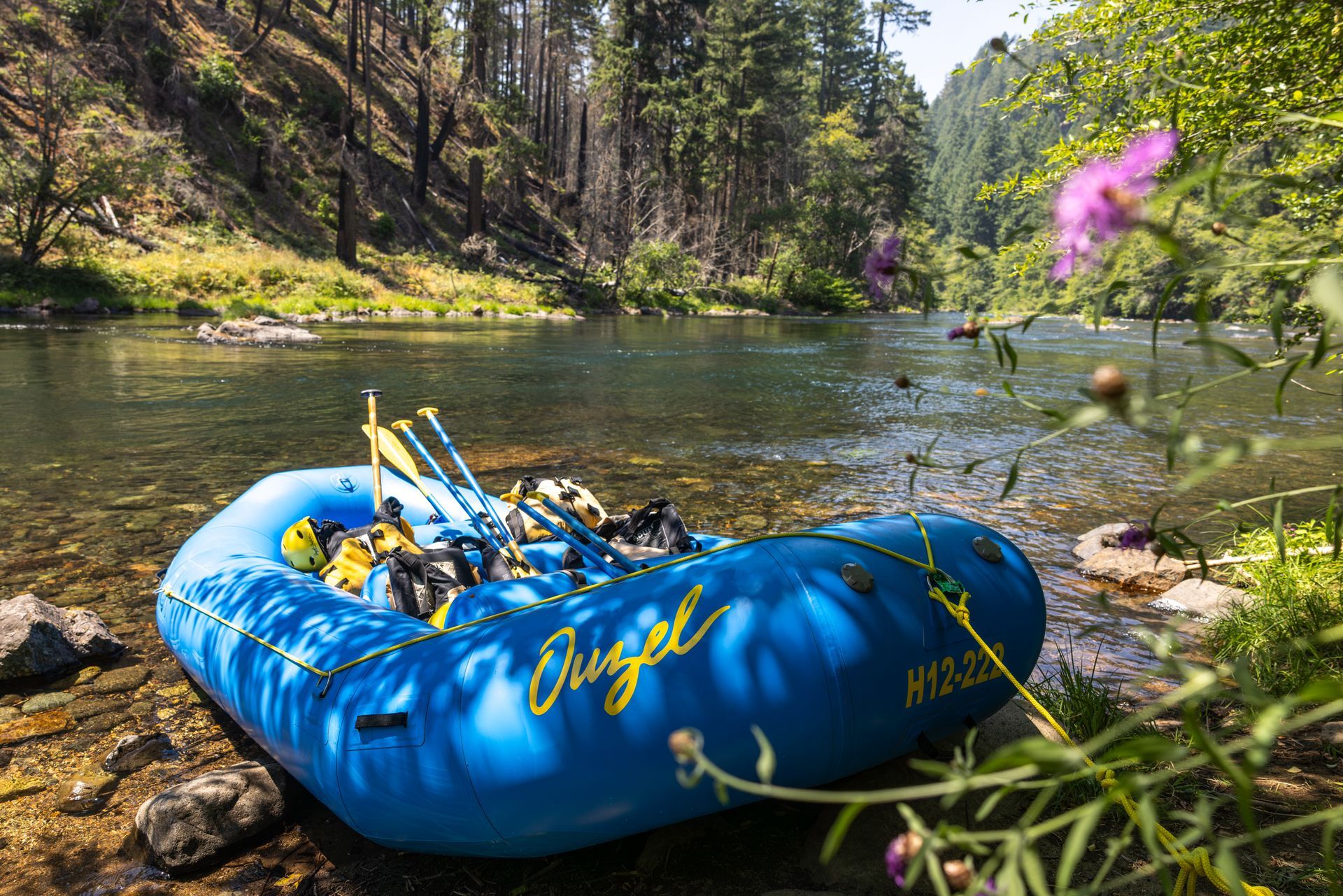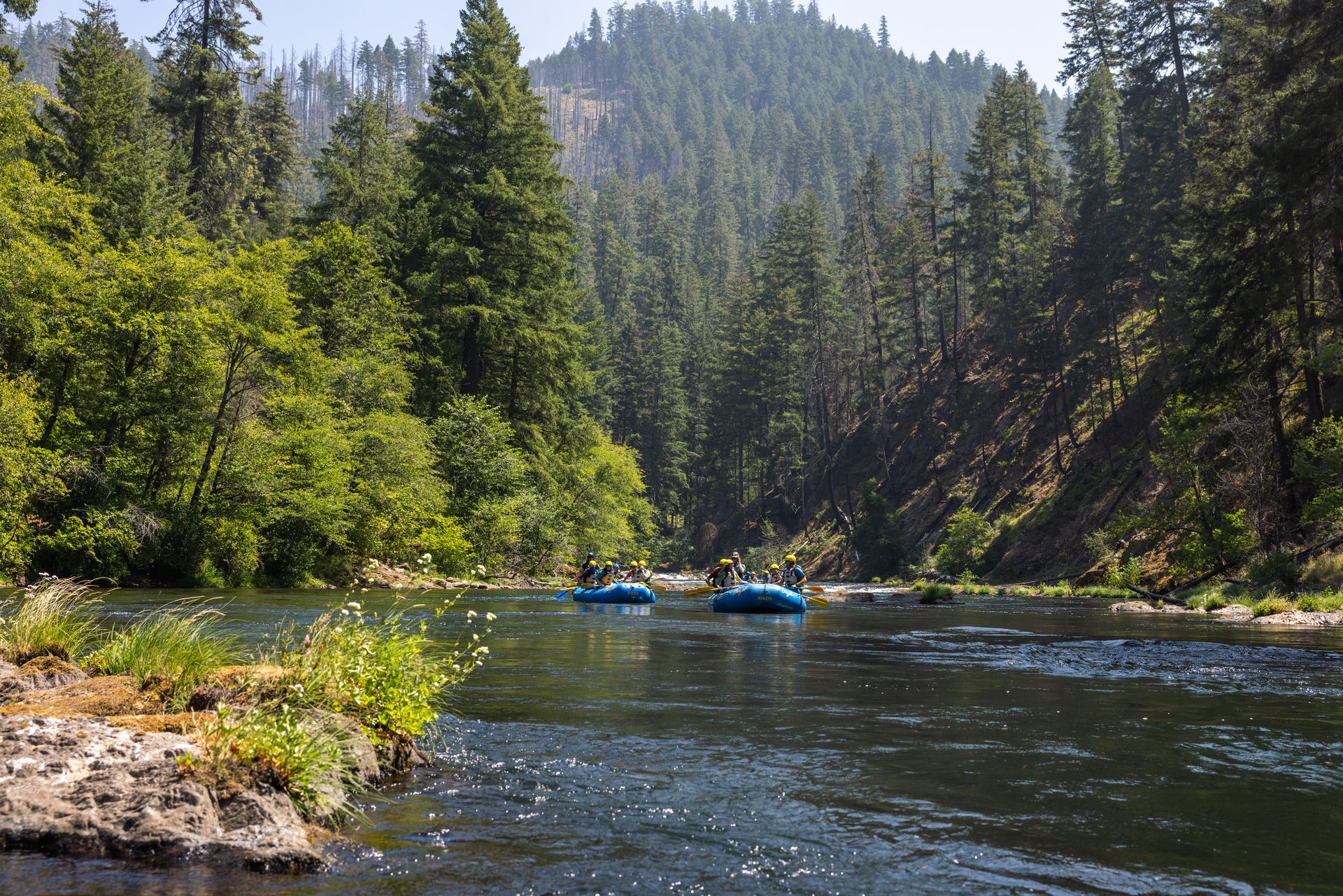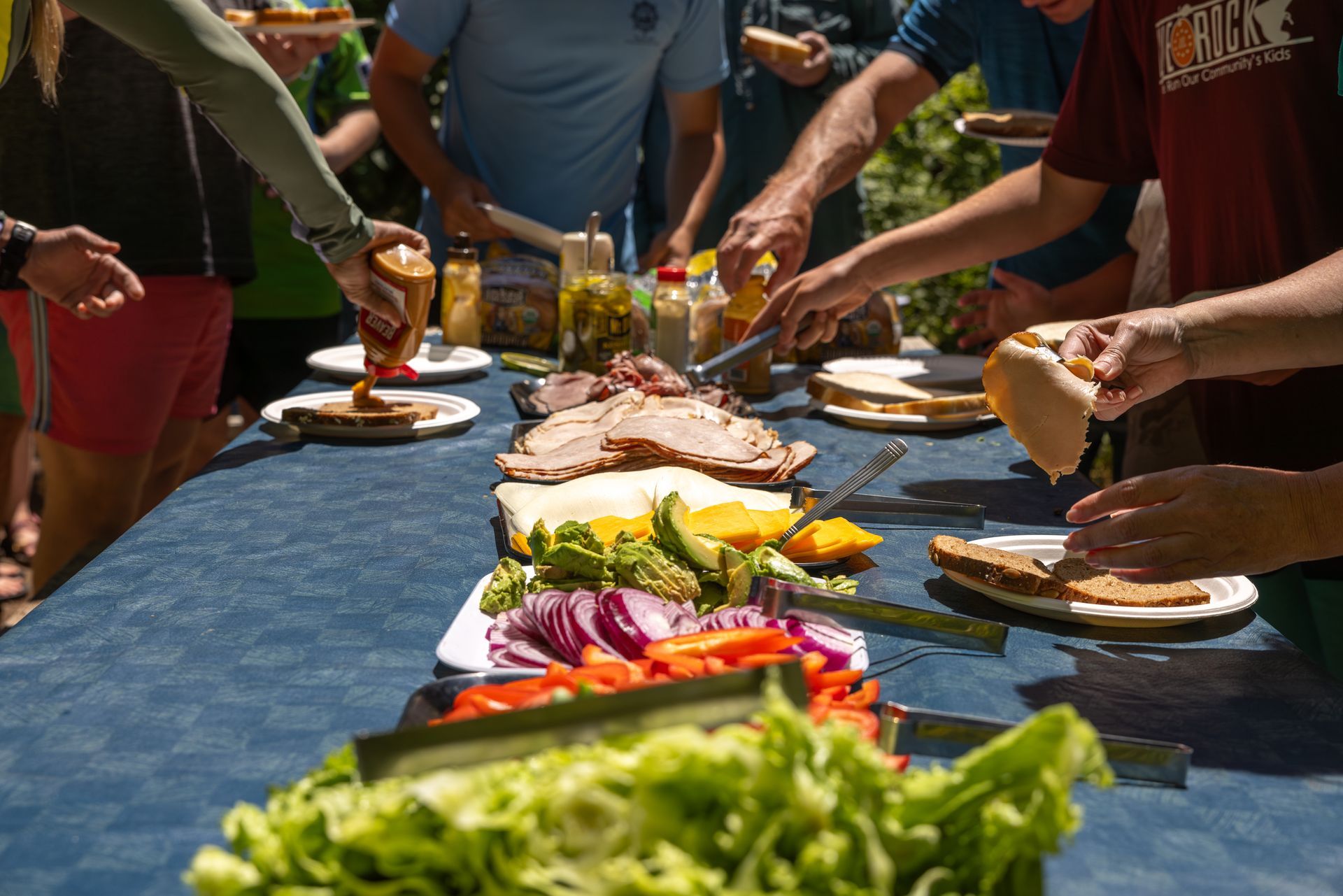North Umpqua River Travel & Area Information
Weather Conditions
The weather is usually warm and sunny from mid June through August. Rain is likely in May and possible anytime of year and river is chilly. We provide plenty of cool-weather rafting gear when conditions warrant.

Getting There
Meet us at Gravel Bin Boat Ramp
Full Day Trip - 10:00 a.m.
Transportation & Shuttles
Your vehicle will be parked at Gravel Bin Boat Ramp. While the entire parking lot is visible from the HWY, unfortunately, theft from vehicles is not unknown along this stretch of the HWY 138. We highly recommend leaving valuables at home or at the very least, locking them in your trunk, glove box or keeping them out of sight. Wallets and keys can be stored in the dry bags available on each raft or may be left in our van during the trip.
Gravel Bin Boar Ramp Location Map
Where to Stay
On the River
Steamboat Inn - Best! A famous country Inn located near our meeting location. Excellent dining. Lodge and cottages. ½ mile from our meeting location. 800-840-8825
Diamond Lake Resort - Cabins & motel. 50 minutes east of our meeting location. (541) 793-3333
Umpqua's Last Resort -
Wilderness Cabins & RV Park, canvas wall tents, glamping and RV sites
(541) 498-2500
Roseburg (45 minutes west of Gravel Bin)
Best Western Garden Villa Inn - Roseburg. 45 minutes west of our meeting location. 800-528-1234
IdleYld Lodge: B&B - Great Reviews. 15 minutes west of our meeting location. 541-496-0088
Area Activities
At 1,932 feet, Crater Lake is the deepest lake in the United States, and arguably the most spectacular. Set within the collapsed caldera of ancient Mount Mazama, Crater Lake offers a striking view into the Cascade Mountain’s explosive past. Drive the Rim Loop, visit Crater Lake Lodge, walk through the Pumice Desert, and take a boat tour to Wizard Island.
Known for its variety of high quality wines, the valley is cool enough to produce Burgundian wines such as Pinot Noir and Chardonnay, yet warm enough for growing Bordeaux varieties like Cabernet Sauvignon and Merlot. Gewurtztraminer and Reisling are a notable addition to the list.
Take a driving tour through the savannas of SW Oregon to see lions, tigers, bears, and more. Located in Winston, 10 miles SW of Roseburg, off Hwy 42.
In the Umpqua National Forest, this alpine lake offers boating, fishing, camping and resort facilities. Located just off Hwy. 138, five miles north of Crater Lake National Park.
Known as the “Lightning Rod of the Cascades”, a very difficult hike to the summit of this glacially-eroded horn affords incredible views of the surrounding terrain. Trail head located on Hwy. 138, about two miles north of its junction with Hwy 230.
Outstanding Remarkable Values
Wild & Scenic River Designation - October 28, 1988

